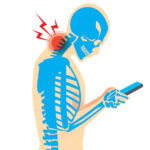No one wants to feel hopeless or persistent sadness, or feel numb, unable to enjoy life, lacking interest, unable to sleep, stuck in a spiraling domino of no energy or motivation. Depression keeps people from living fully. Taking steps to change it can feel overwhelming. And many people either don’t want to take antidepressant meds, or in some cases medicine doesn’t work.1
That’s why we wanted to shine a light on some studies and research that are exploring how heat and infrared can help people feel better from the debilitating and vitality-robbing effects of depression.
The Passion Fueling the Research
A group of researchers is passionate about finding alternative treatments. They are looking for something that is “fast-acting, safe, and convenient to obtain. The successful development of these therapies will require a better understanding of the mechanisms of depression and how to directly target them.”1
A study by Dr. Charles Raison, published in the Journal of the American Medical Association Psychiatry in 20162 discussed the possibilities of hyperthermia (elevating core body temperature) to unlock options to relieve symptoms: “Whole-body hyperthermia holds promise as a safe, rapid-acting, antidepressant modality with a prolonged therapeutic effect.”
The Study That Sparked Hope
Raison’s randomized, double-blind study investigated a foundational fact discovered in a 1982 study3 that noted one simple point: patients with depression had temperature dysregulation, an inability to cool themselves down, especially at night. When depression symptoms decreased, so did body temps. At the time, no one understood the significance, which spurred researchers to conduct an exploratory study in 1996. They did one simple test of a theory that hyperthermia (heating the body to mimic a core body “fever” temperature) may play a role in relieving depression symptoms.
Raison expanded on that in 2016, when his research team looked at 30 participants diagnosed with major depression. They assessed the effects of one session of whole-body hyperthermia (“WBH”) on symptoms compared to a placebo group. WBH is a medically-supervised therapy using intense infrared heat (close to 200°F (93.3°C)) to elevate core body temp to activate the body’s natural stress response. The WBH session raised participants’ core body temperature to a mild hyperthermic temp of 101.3°F (38.5°C) and compared results to participants who received a treatment like WBH without the intense heat. The results? Significantly reduced symptoms were observed within 1 week and lasted for the 6-week follow-up period; an outcome researchers found exciting and worth exploring more.
Understanding the Cause of Depression
Raison’s passion is finding the underlying causes of depression. He’s a pioneer seeking an integrated theory of everything on the origins of depression. He’s the author of The New Mind-Body Science of Depression and his term, “Pathogen Host Defense Theory of Depression” (“PATHOS-D”) integrates emerging understandings of underlying mechanisms of depression, centering on the idea that there’s a possible evolution-based protective immune response that activates inflammation in the body.4
That’s a ground-breaking, game-changing idea.
What Else Researchers Are Exploring
Some pieces of the puzzle scientists are exploring.
- Chronic inflammation is associated with depression and may be a protective, inflammatory response involving thermoregulatory pathways, the immune system, the serotonin system, heat shock proteins, and more.5,10
- Exercise is known to help depression. Can the passive cardio and anti-inflammatory benefits of heat help with depression as well?6
- How does the practice of hot yoga affect depression symptoms?7
- What does sweat reveal about body temperature dysregulation and depression, as many people experience excessive sweating as a side effect of SSRI antidepressant medication?
- Sleep and heart disease are integrally connected to depression. Can heat be a key help with multiple issues?
- Neural signals coming from heating skin may play a role in stimulating specific areas of the brain.
- What role does ambient heat vs infrared waves play in raising effective core body temperature and relieving symptoms of depression?
- Can commercially-available infrared saunas offer an effective and desirable treatment?8,9
- What can biomarkers tell us about what’s going on in the body during depression and the application of heat for treatment?9
Sauna-specific Studies for Treatment of Depression
The results of Raison’s 2016 study caught the eye of Dr. Ashley Mason, one of his former graduate advisees and now an integrative psychiatrist who directs the Sleep, Eating and Affect (SEA) Lab at the University of California San Francisco Osher Center. She got excited because SSRI antidepressants can take weeks or months before they start to work. Dr. Raison saw effect a few days after only one session.11
Mason wanted to figure out how to use heat in a scientifically feasible way that would also be more accessible. Using a WBH device presented challenges and limitations:
- Expensive device (appx. $50,000)
- Very uncomfortable heat that many people may not be able to endure for longer periods
- Not very accessible and can be difficult to obtain (made in Germany)
The Difference Between WBH and Sauna
WBH is an emerging field and while WBH and sauna both involve heat, they are very different experiences.
Saunas have been around for years and offer pleasurable, relaxing, calming experiences that leave you feeling better. You are free to get in and out and enjoy the experience.
WBH is an emerging field used with specific, controlled protocols requiring you to stay in a very, very hot, intense experience for an hour or more. It is a treatment, not a spa-like experience.
Using a commercially-available and affordable personal infrared sauna dome provided a viable option for the next study.
Recently Completed Research
“Feasibility and acceptability of a Whole-Body hyperthermia (WBH) protocol”
Dr. Mason has taken the lead in the follow-up on Raison’s WBH research. Her most recently completed clinical trial involving 25 people cleared the way for the next study to test personal far infrared sauna domes as safe WBH treatment for physically healthy people with depression and was published October 2021.8
The 2019-2020 interventional study used a far infrared sauna dome heated to appx 135°F for up to 110 minutes to achieve core body temp of 101.3°F, with the participant’s head outside the sauna. The protocol administrator provides water and cold cloths to keep the patient comfortable. Other studies found depression symptoms are reduced more when people spent more time getting to the peak temperature. So in the protocol, Dr. Mason started the treatment cooler, and allowed the participant to heat up with the sauna, which the study found helped people endure the treatment better.
The safety study concluded “this novel WBH protocol holds promise in further assessing the utility of WBH in MDD (major depressive disorder) treatment.”
Upcoming Clinical Research
“HypErthermia as an Additional Treatment for the Biology & Experience of Depression (HEAT BED) Study”
Dr. Mason used the first trial to design protocols to test in her next two planned clinical trials over the next 3 years that she hopes will pave the way to proving heat treatment as a real, clinically-valid treatment for depression. The protocols involve WBH sessions combined with proven cognitive behavioral therapy for depression (“CBT-I”), the “gold standard” first-line treatment for depression with a therapist.
The idea came from the 2016 study when researchers noticed study patients often started chatting, which is uncharacteristic of depression’s social withdrawal symptoms. They theorized that if WBH increased people’s desire to talk more, then pairing sauna’s traditional communal social experience may cause people to engage more in the therapy. The trial will test a dual intervention with a mind and a body component.
She’ll also be gathering some of the first biological data to hopefully learn more about the underpinnings of depression, and how sauna sessions may affect people with depression at a molecular level.
Heat & Hope for Future Discoveries & Depression Treatment
If Mason’s theories prove correct, the future could hold bright promise for the treatment of depression.
- Capitalizing on sauna benefits may help people participate in WBH therapy. Treatment doesn’t work if people won’t do it. Sauna use could be a pleasant, desirable option that helps patients get over that hurdle.
- Lifestyle factors influence depression, and exercise improves depressive symptoms. It’s not easy to get someone who is depressed to exercise. Sauna mimics moderate cardio exercise and could help people with depression, or who have injuries or other problems, to get a form of exercise.
- Cardiovascular disease and depression often go hand in hand. There is a large group of people struggling with both for whom sauna may have a positive effect for both conditions.
- Would people rather take drugs that have side effects or sit in a sauna where they can read a magazine while they get treatment?
These studies are exciting next steps toward discoveries that may bring hope and healing for millions suffering from depression.
REFERENCES
1 Mischoulon D. Heat: A New Approach to Treating Depression? Focus (Am Psychiatr Publ). 2017 Oct;15(4):6s-7s. doi: 10.1176/appi.focus.154S06. Epub 2017 Oct 12. PMID: 31975887; PMCID: PMC6519523.
2 Janssen CW, Lowry CA, Mehl MR, Allen JJ, Kelly KL, Gartner DE, Medrano A, Begay TK, Rentscher K, White JJ, Fridman A, Roberts LJ, Robbins ML, Hanusch KU, Cole SP, Raison CL. Whole-Body Hyperthermia for the Treatment of Major Depressive Disorder: A Randomized Clinical Trial. JAMA Psychiatry. 2016 Aug 1;73(8):789-95. PMID: 27172277.
3 Avery DH, Wildschiødtz G, Rafaelsen OJ. Nocturnal temperature in affective disorder. J Affect Disord. 1982 Mar;4(1):61-71. doi: 10.1016/0165-0327(82)90020-9. PMID: 6461688.
4 Raison CL, Miller AH. Pathogen-Host Defense in the Evolution of Depression: Insights into Epidemiology, Genetics, Bioregional Differences and Female Preponderance. Neuropsychopharmacology. 2017;42(1):5-27. doi:10.1038/npp.2016.194
5 Raison CL, Capuron L, Miller AH. Cytokines sing the blues: inflammation and the pathogenesis of depression. Trends Immunol. 2006 Jan;27(1):24-31. doi: 10.1016/j.it.2005.11.006. Epub 2005 Nov 28. PMID: 16316783; PMCID: PMC3392963.
6 Iguchi M, Littmann AE, Chang SH, Wester LA, Knipper JS, Shields RK. Heat stress and cardiovascular, hormonal, and heat shock proteins in humans. J Athl Train. 2012;47(2):184-190. doi:10.4085/1062-6050-47.2.184
7 Nyer M, Hopkins LB, Farabaugh A, Nauphal M, Parkin S, McKee MM, Miller KK, Streeter C, Uebelacker LA, Fava M, Alpert JE, Pedrelli P, Mischoulon D. Community-Delivered Heated Hatha Yoga as a Treatment for Depressive Symptoms: An Uncontrolled Pilot Study. J Altern Complement Med. 2019 Aug;25(8):814-823PMID: 31290694.
8 Ashley E. Mason, Sarah M. Fisher, Anoushka Chowdhary, Ekaterina Guvva, Danou Veasna, Erin Floyd, Sean B. Fender & Charles Raison (2021) Feasibility and acceptability of a Whole-Body hyperthermia (WBH) protocol, International Journal of Hyperthermia, 38:1, 1529-1535, DOI: 10.1080/02656736.2021.1991010
9 UCSF SEA Lab, HypErthermia as an Additional Treatment for the Biology & Experience of Depression (HEAT BED) Study
10 Périard JD, Racinais S, Sawka MN. Adaptations and mechanisms of human heat acclimation: Applications for competitive athletes and sports. Scand J Med Sci Sports. 2015 Jun;25 Suppl 1:20-38. doi: 10.1111/sms.12408. PMID: 25943654.
11 Dr. Ashley Mason on Drug-free Approaches for Treating Depression, Insomnia and Overeating, Found My Fitness, Episode 67, Sept 1, 2021
WRITTEN BY: Sunlighten
Shining light on infrared technology, Sunlighten® is the #1 choice for personalized infrared light treatments. Since 1999, we have been committed to innovating wellness products and services that empower our customers to improve their quality of life. Our patented SoloCarbon® technology rejuvenates the body by delivering the highest dose of infrared energy to the body – proven up to 99% effective. Our technological innovations are fueled by our passion to make a difference. And we are building a global community of businesses, consumers, and trusted experts to support each other along the way and make the world a healthier, happier place.
Sunlighten saunas are not a medical device as defined by Section 201(h) of the Food, Drug & Cosmetic Act. Sunlighten provides general information relating to various medical conditions for informational purposes only and is not meant to be a substitute for advice provided by a doctor or other qualified health care professional. Please consult with your physician regarding diagnosis or treatment.
Dr. Derek Gallant
Dr. Derek Gallant has committed himself to helping others live the best life possible. After graduating from Wesleyan University, he received his Doctor of Chiropractic Degree from Life Chiropractic College West where he finished 2nd in his class. He is the owner of Beverly Family Chiropractic and co-founder of The Well Family Foundation. Dr. Gallant is certified through the International Chiropractic Pediatric Association (ICPA) in the Webster technique, an analysis focused on assisting pregnant women in a healthy pregnancy and natural birth. He has inspired thousands of people to take control of their own health using the Life By Design method. Apart from full time practice you can find Derek at the parks and coffee shops around Beverly with his family, training hard at the gym, or at the beach surfing.








